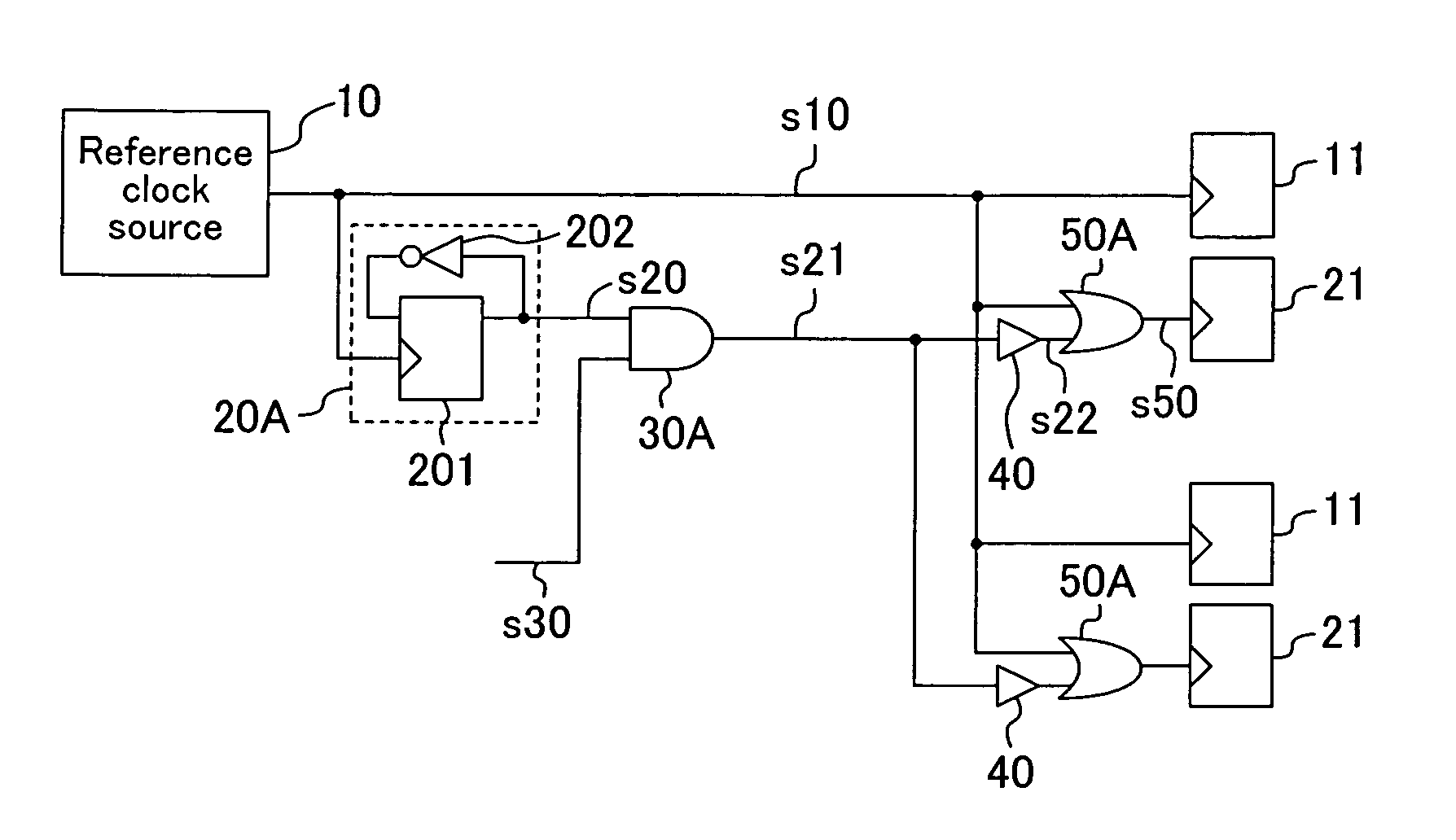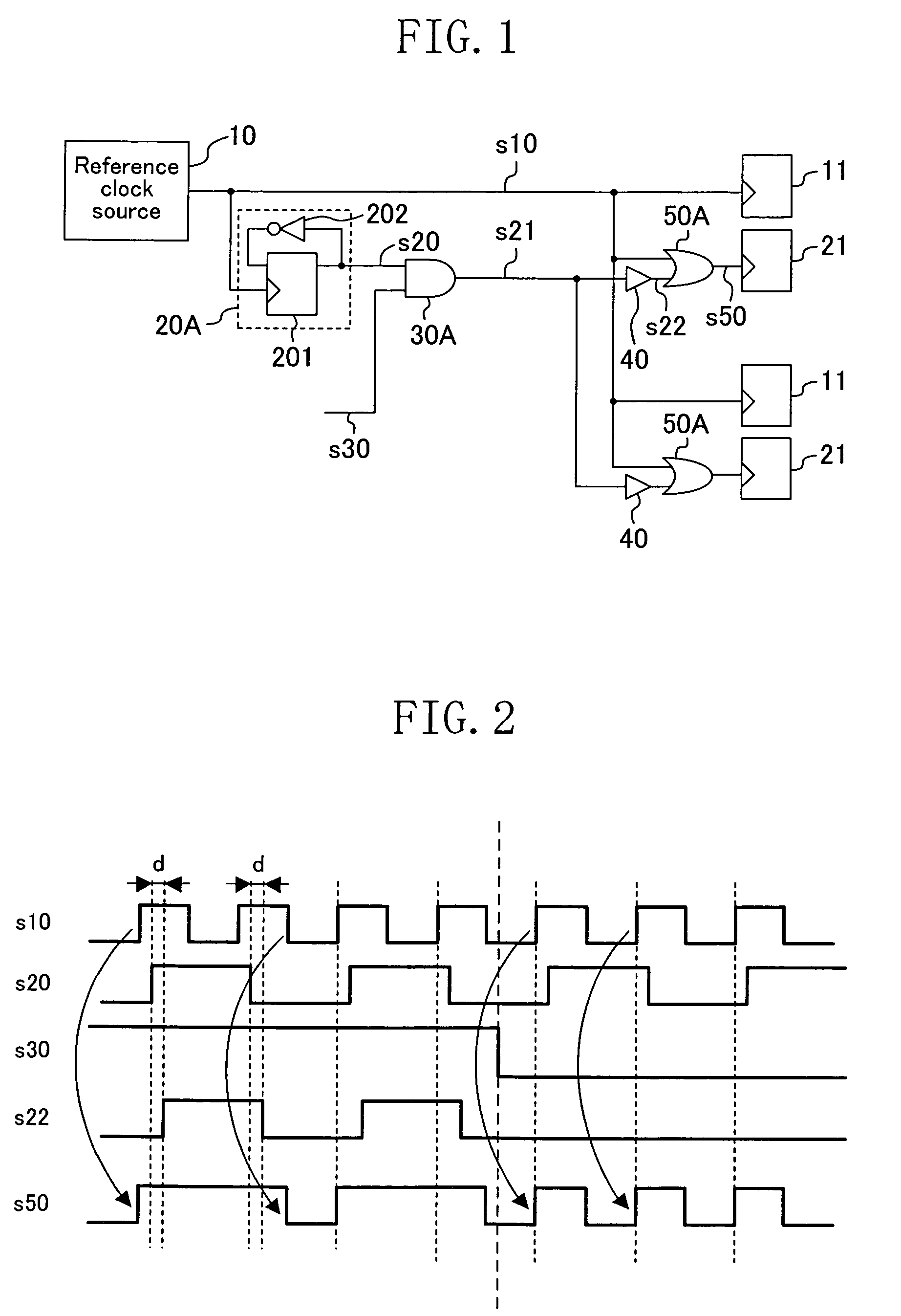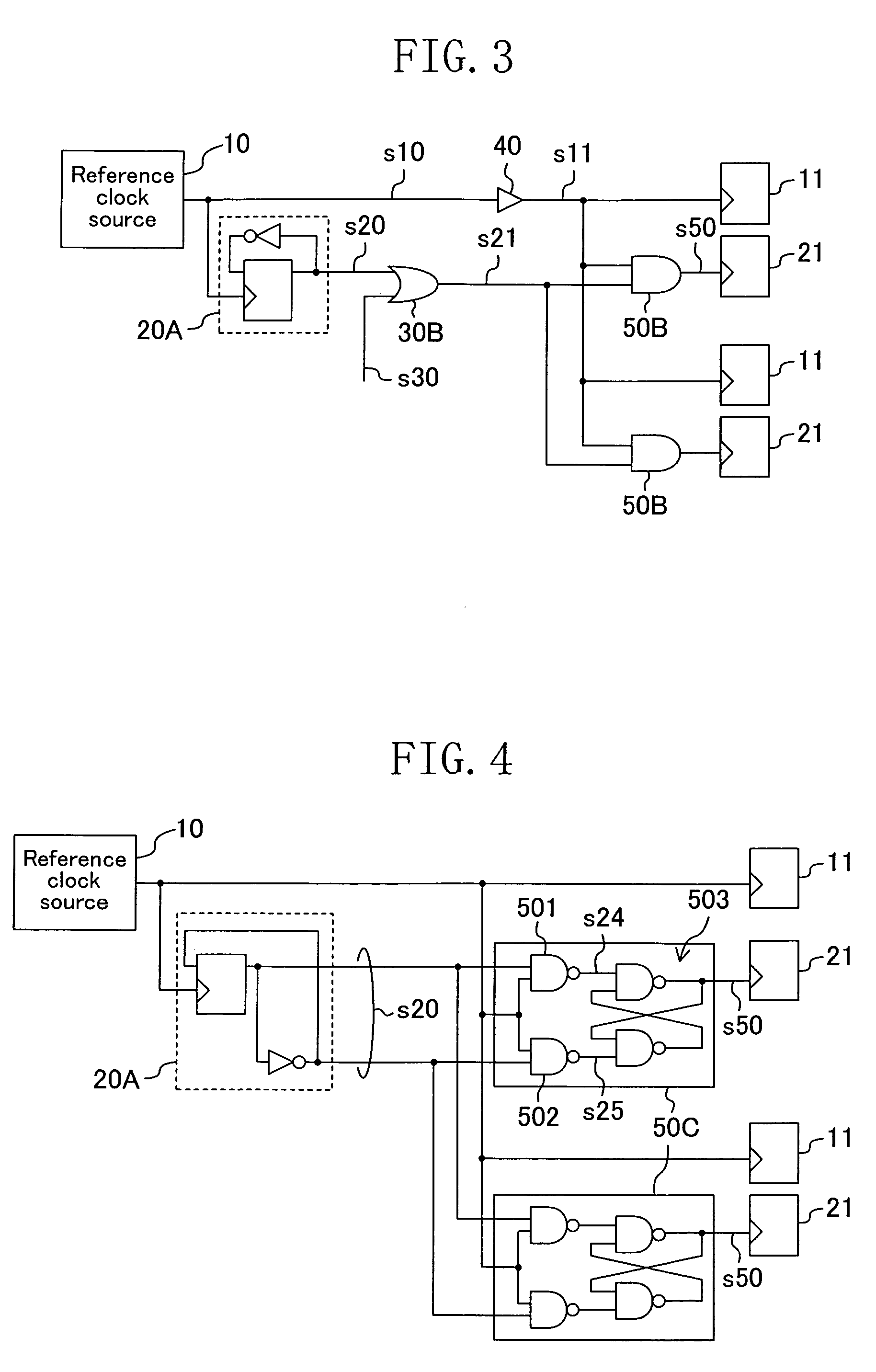Clock generator
a generator and clock technology, applied in the direction of generating/distributing signals, pulse techniques, instruments, etc., can solve the problems of skew generation between the reference clock signal and the frequency-divided clock signal, the difficulty of covering all states by performing operation inspection, and the decline of function, so as to achieve the effect of suppressing skew and improving timing convergen
- Summary
- Abstract
- Description
- Claims
- Application Information
AI Technical Summary
Benefits of technology
Problems solved by technology
Method used
Image
Examples
first embodiment
[0035]FIG. 1 illustrates the structure of a clock generator according to a first embodiment. This clock generator includes a reference clock source 10 as a first circuit, a frequency dividing circuit 20A as a second circuit, an AND gate 30A as a control circuit, delay circuits 40, and OR gates 50A as third circuits.
[0036]The reference clock source 10 generates a reference clock signal s10 as a first clock signal. The frequency dividing circuit 20A includes a flip-flop 201 and an inverter 202. The inverter 202 inverts the output signal of the flip-flop 201. The flip-flop 201 receives, as an input signal, the output signal of the inverter 202 and outputs a frequency-divided clock signal s20 as a second clock signal in synchronization with the rise of the reference clock signal s10. The AND gate 30A receives the frequency-divided clock signal s20 and a control signal s30 and performs an AND operation with respect to these signals to output a frequency-divided clock signal s21. The dela...
second embodiment
[0043]FIG. 4 illustrates the structure of a clock generator according to a second embodiment. This clock generator includes a reference clock source 10, a frequency dividing circuit 20A, and circuits 50C as third circuits. The frequency dividing circuit 20A outputs a frequency-divided clock signal s20 as a differential signal.
[0044]Each of the circuits 50C includes NAND gates 501 and 502 and an RS flip-flop 503. The NAND gate 501 receives a reference clock signal s10 and one side of the frequency-divided clock signal s20 output from the frequency dividing circuit 20A and outputs a frequency-divided clock signal s24. The NAND gate 502 receives the reference clock signal s10 and the other side of the frequency-divided clock signal s20 and outputs a frequency-divided clock signal s25. The RS flip-flop 503 receives, as input signals, the frequency-divided clock signals s24 and s25 output from the NAND gates 501 and 502.
[0045]FIG. 5 is a timing chart of the clock generator according to t...
third embodiment
[0047]FIG. 6 illustrates the structure of a clock generator according to a third embodiment. In this clock generator, the OR gate 30B in the clock generator shown in FIG. 3 is omitted, and three-input AND gates 50D are included in place of the AND gates 50B in the clock generator shown in FIG. 3. The AND gates 50D each receive an enable signal s31, as a control signal, in addition to a reference clock signal s11 and a frequency-divided clock signal s20 and perform an AND operation with respect to these signals to output a frequency-divided clock signal s50.
[0048]As described above, in this embodiment, it is possible to make the frequency-divided clock signal s50 switch between the valid and invalid states by using the enable signal s31. Also, the adoption of the three-input AND gate 50D permits this switching to be controlled without causing a particular increase in the circuit size.
PUM
 Login to View More
Login to View More Abstract
Description
Claims
Application Information
 Login to View More
Login to View More - R&D
- Intellectual Property
- Life Sciences
- Materials
- Tech Scout
- Unparalleled Data Quality
- Higher Quality Content
- 60% Fewer Hallucinations
Browse by: Latest US Patents, China's latest patents, Technical Efficacy Thesaurus, Application Domain, Technology Topic, Popular Technical Reports.
© 2025 PatSnap. All rights reserved.Legal|Privacy policy|Modern Slavery Act Transparency Statement|Sitemap|About US| Contact US: help@patsnap.com



